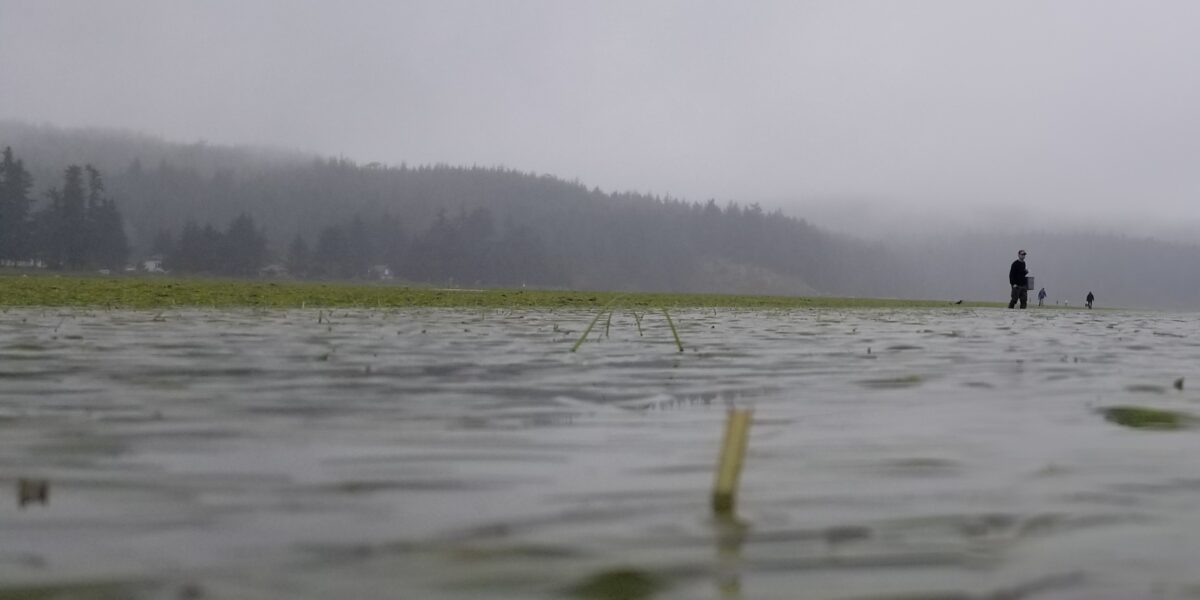
Toxic Currents of Port Hardy: Can The Tides Change Back?
On byIn any given landscape, the dynamics of growth and destruction are at play. In an educational setting, the term “ecological succession” often has clear identifiable successional stages. Each stage has different amplitudes of natural disasters, and different recovery times from such disturbances. One quick google search of ecological succession will show links to educational material all relating to land ecosystems, the majority being “forest succession”1. A google search does not represent the overall understanding of ecological succession, however it does influence the users that there’s only one type of succession, and that it is land-based2.
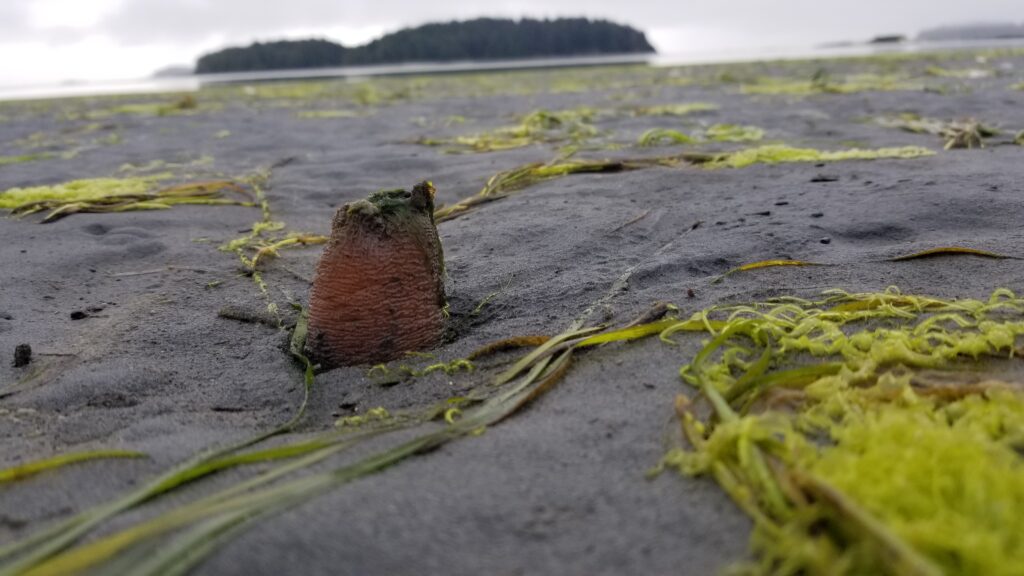
Negative effects of climate change are increasing in frequency and intensity. Deniers of climate change would say “this is just part of the weather”, or it’s a natural disturbance of its cyclical succession. Those statements are false, and those effects are harder to reverse in a marine setting3. With lack of educational materials on marine-based ecological succession, there can often be uncertainty with knowing what disturbances are part of the landscape’s ecosystem, and what disturbances are driven by climate change. There is one location that I visit often that does experience cyclical disturbances, but is also affected more and more by climate change: Port Hardy, British Columbia.
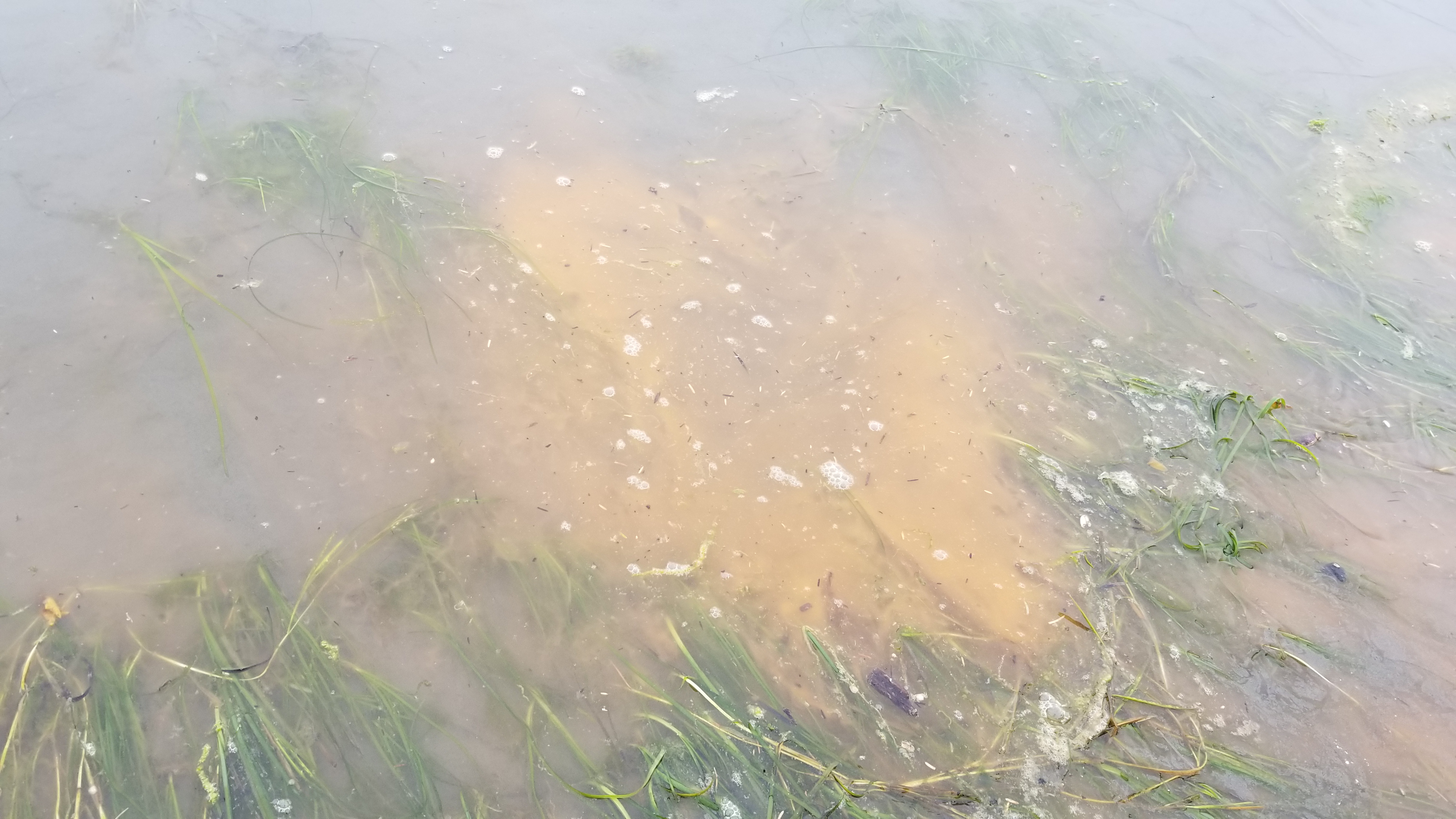
Port Hardy is located on Vancouver Island, near the northern tip and just East of Cape Scott Provincial Park. Due to the location coastal and far north, it experiences cool temperate climate; it gets as hot as 15ºC in the summer, and as cold as 0ºC in the winter4 5 . On a regular summer heat wave, you can probably experience a little over 20ºC. This cool climate allows for shellfish and bivalve harvesting during low tide, and many forms of seafood harvesting for locals. This availability of resources is important for the First Nations that live in this area and nearby reserves. In the summer, there would be a few notices of shellfish and bivalve harvesting bans due to red tide (an algal bloom composed of protozoans and unicellular algae). However, the extent of these bans are not long since temperatures are relatively cool and mild. The North of Vancouver Island does experience more of red tide then the southern portion due to the North Pacific Current. It flows water rich in nutrients across the pacific, towards Vancouver Island, then splits the current towards Alaska (Alaska Current) and California (Davidson Current).
As of when this was written, the Pacific Northwest received its hottest heat wave. I happened to be in Port Hardy at that time, and it reached a height of 40ºC. We woke up early in the morning to catch some crabs at low tide, and even then it was hard to see below the water due to the red tide. Algal blooms do especially well in higher temperatures, sunlight, and nutrients. At this temperature the entire coast was covered in red-orange slush; it is guaranteed that the shellfish and bivalve harvesting closure could extend towards the winter. At 40ºC, almost all of the shellfish and bivalves caught in the low tide will have been cooked.
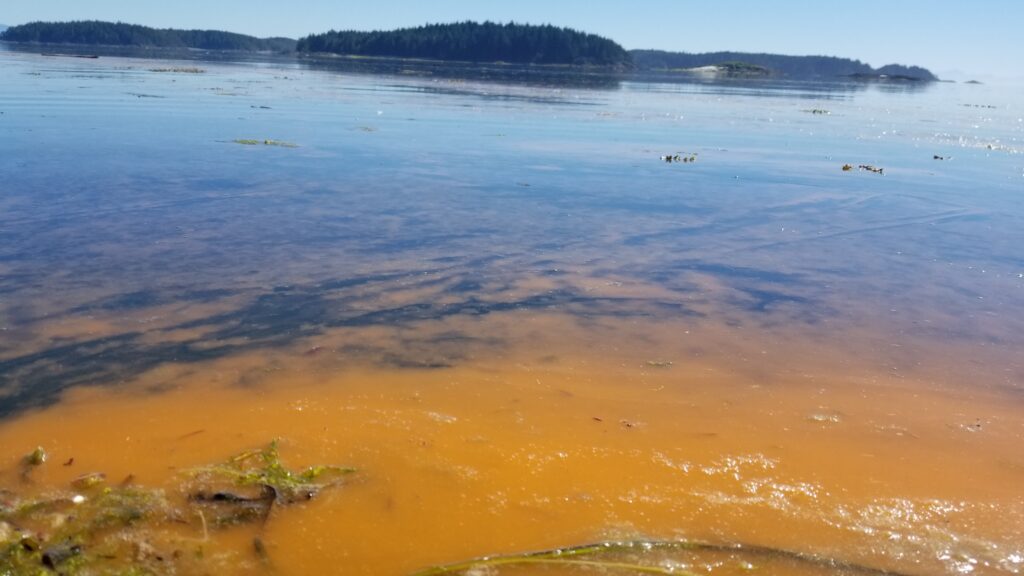
When the toxins produced from the red tide contaminate the resources, it hurts most that depend on it. Red tide also has cascading effects. The toxins produced have shown to cause massive die-offs in large aquatic mammals and fish6. These toxins also bioaccumulate up the trophic levels, and will affect those who consume seafood in the area. Dead fish and aquatic mammals also contribute to the growth of these algal blooms since their decomposition provides vital nutrients for this algae. Added with the increase in temperatures from climate change, these blooms are expected to increase in intensity and duration, in a way fulfilling a positive feedback cycle. As climate change increases amounts of red tide, more die offs will happen. The increase in die-offs from the bloom’s biotoxins and oxygen depletion, and die-offs from subsequent heat waves will then charge another red tide appearance and the cycle continues7.
The reason why I brought up ecological succession is because I personally see that there is not enough awareness and education regarding of marine ecology succession and disturbances. Yes, low tide and high tide, storms, and the occasional algal bloom does cause a stir (no pun intended), but the significance of the increase in red tide should not go unnoticed. This will impact local fisheries, first Nations that depend on those resources, and possible tourism opportunities such as whale watching and fishing.
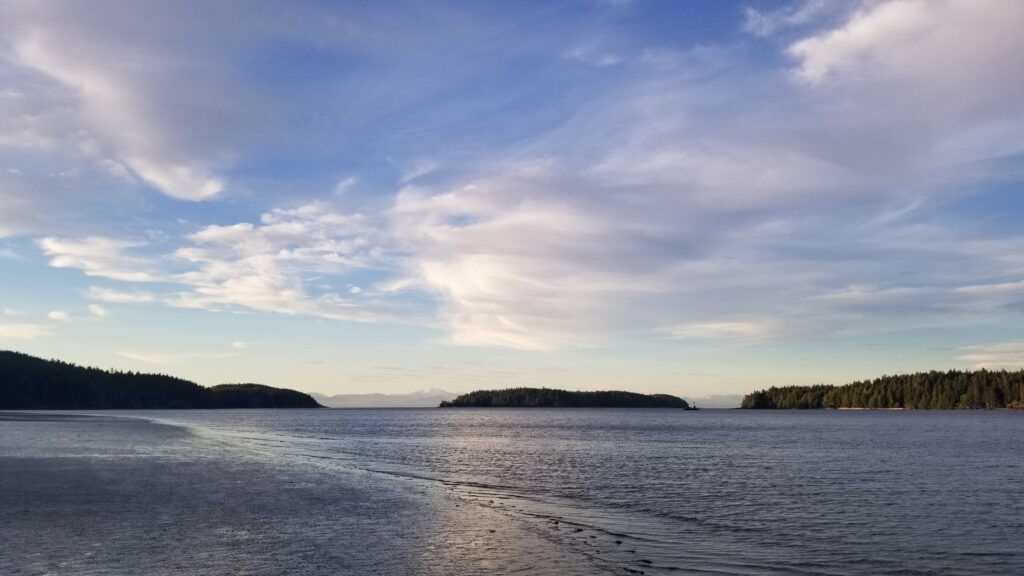
Footnotes
1. Goggle Search: Ecological Succession.
2. Prach, K. and Walker, L. R. 2011. Four opportunities for studies of ecological succession. Trends in Ecology and & Evolution: 26(3): 119-123.
3. Jha, R., Singh, V. P., Singh, V., Roy, L. B., and Thendiyath, R. 2021. Climate Change Impacts on Water Resources: hydraulics, water resources, coastal engineering. Water Science and Technology Library: 98.
5. Port Hardy Climate Information.
6. Flewelling LJ, Naar JP, Abbott JP, et al. 2005. Brevetoxicosis: red tides and marine mammal mortalities. Nature.;435(7043):755-756.
7. Shivaram, D. 2021. Heat Wave Killed An Estimated 1 Billion Sea Creatures, And Scientists Fear Even Worse. NPR.